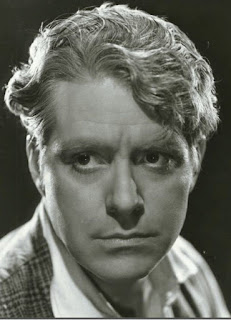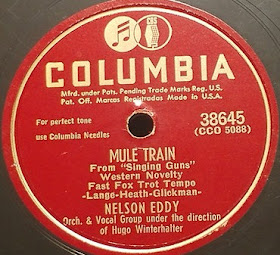Stuart Foster (born Tamer Aswad, born June 30, 1918 in Binghamton , New York , † January 8, 1968 ) was an American big band singer with a magnificent baritone voice. Once called the “greatest unsung singer,” he had a long and distinguished career. Though he never achieved anything more than a moderate level of fame, Foster worked with some of the biggest names in the business and earned the respect of critics and colleagues alike over his thirty years as a vocalist.
 |
| Stuart and Bubbles |
he received feature billing and appeared with the group in the 1944 Columbia film Ever Since Venus. He remained with Hutton for four years until Hutton, citing a need for rest, temporarily disbanded in August 1944. (While he was working with Hutton at the Astor Roof in NYC, NY, he met Patricia "Bubbles" Louie from the Kim Loo Sisters. They married April 15, 1946 in Cambria Heights, NY. They had one child together born in NYC, James "Jimmy" Tamer.)
Foster then joined Guy Lombardo’s orchestra, where
he had his only chart success, singing on two of the band’s hit songs. “Always”
peaked at the number ten spot for one week in February 1945, and “Poor Little
Rhode Island” reached number eleven on the jukebox charts in May 1945. The
former was recorded in early November 1944, and the latter on December 1st.
Hutton announced her reorganization the following day, and Foster returned to
her band, where he stayed only briefly. By early March 1945, he’d joined Tommy
Dorsey.
 At the time Foster joined, Dorsey had been having trouble
finding and keeping male vocalists. He’d gone through a slew of singers since
Skip Nelson had left in October 1944, some of them only staying a few days.
With Foster, Dorsey found stability. The baritone stayed with the orchestra
until Dorsey disbanded in November 1946. When the bandleader put together a
temporary orchestra the following month for a four-week engagement, Foster
returned, as he did when Dorsey permanently reformed in May 1947. In August
1947, Foster was voted best-liked male vocalist in Billboard magazine’s first
annual DJ poll. He appeared with the band in the 1947 film The Fabulous
Dorseys.
At the time Foster joined, Dorsey had been having trouble
finding and keeping male vocalists. He’d gone through a slew of singers since
Skip Nelson had left in October 1944, some of them only staying a few days.
With Foster, Dorsey found stability. The baritone stayed with the orchestra
until Dorsey disbanded in November 1946. When the bandleader put together a
temporary orchestra the following month for a four-week engagement, Foster
returned, as he did when Dorsey permanently reformed in May 1947. In August
1947, Foster was voted best-liked male vocalist in Billboard magazine’s first
annual DJ poll. He appeared with the band in the 1947 film The Fabulous
Dorseys. Foster remained with Dorsey until mid-1948, when he’d
left by June to begin a solo career. He soon found himself in high demand on
both the airwaves and in the recording studio. Foster worked on several radio shows.
During the 1950s, he also had his own program, which first ran on ABC and later
on CBS from at least 1952 to 1958. He also appeared on Drake’s 1957 ABC
television program.
Foster remained with Dorsey until mid-1948, when he’d
left by June to begin a solo career. He soon found himself in high demand on
both the airwaves and in the recording studio. Foster worked on several radio shows.
During the 1950s, he also had his own program, which first ran on ABC and later
on CBS from at least 1952 to 1958. He also appeared on Drake’s 1957 ABC
television program. |
| Stuart & family |
 In 1951, Foster recorded several more times with
Winterhalter again as well as with Bob Dewey’s orchestra, both on Victor. He
recorded solo on the new indie PAB label and did one side for Atlantic that
same year. Foster signed with the Abbey label in early 1952 and again recorded
with Winterhalter late that year. In 1953, he recorded with Xavier Cugat on
Victor and Gordon Jenkins on Decca. In 1954, he recorded for Bell and RCA’s
Camden label as well as on the Italian Nightingale label. Foster sang with the
Chappaqua High School Kids choir on Coral in early 1955 and both Jenkins and
Art Mooney later that year. He was back in the studio with Jenkins in 1956 and
then did solo work on Coral.
In 1951, Foster recorded several more times with
Winterhalter again as well as with Bob Dewey’s orchestra, both on Victor. He
recorded solo on the new indie PAB label and did one side for Atlantic that
same year. Foster signed with the Abbey label in early 1952 and again recorded
with Winterhalter late that year. In 1953, he recorded with Xavier Cugat on
Victor and Gordon Jenkins on Decca. In 1954, he recorded for Bell and RCA’s
Camden label as well as on the Italian Nightingale label. Foster sang with the
Chappaqua High School Kids choir on Coral in early 1955 and both Jenkins and
Art Mooney later that year. He was back in the studio with Jenkins in 1956 and
then did solo work on Coral.
1957 saw Foster singing on Camden’s low-priced Hits of
’57 album. He went in the studio with the Dick Jacobs Orchestra in 1959, on
Coral, and sang on the 20th Century Fox concept album Rain in 1960. Every song
either had rain or suggested rain in the title. He recorded solo on Jubilee in
1960 and Mohawk in 1962. He also appeared on a special album of Academy Award
winning songs put out by Doubleday Books in 1961. Foster’s last recording was
for the Gold Coin label in 1965.
From the late 1950s onward, Foster worked as a staff
vocalist at CBS, often appearing on the network’s special programs, singing
with their house orchestra. Foster did go on the road one last time, in 1965
with Skitch Henderson’s orchestra. Stuart Foster died from heart failure in New
York on 8 January, 1968 at the young age of 49.
(Edited mainly from Band Chirps. †
other sources give February 7th as date of death)















































